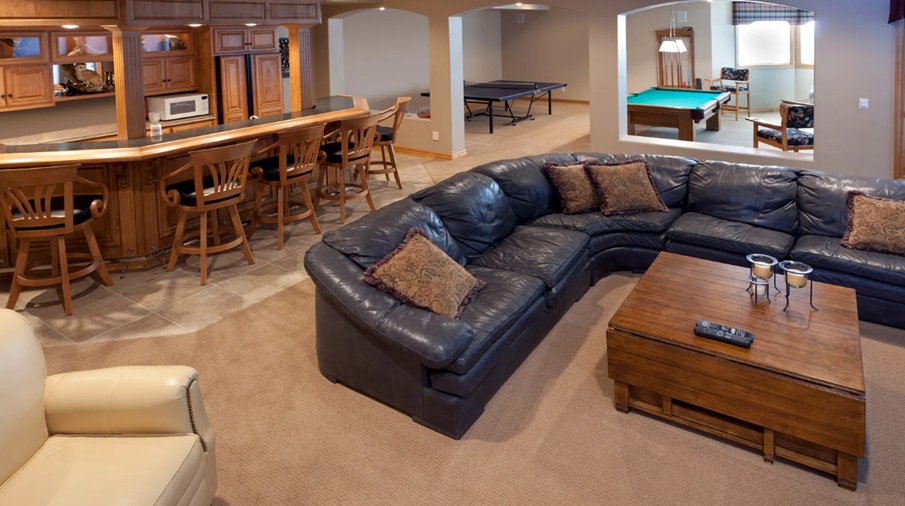A basement remodel presents an excellent opportunity to expand your living space, but selecting the right flooring is crucial to ensuring durability and functionality. Factors such as moisture resistance, comfort, and style all play a role in making the best choice. If you’re considering basement remodeling in Johns Creek, it’s essential to explore flooring options that align with your needs.
Key Considerations for Basement Flooring
Before choosing a flooring material, it’s important to assess your basement’s conditions. Unlike other areas of the home, basements are prone to moisture and temperature fluctuations. Here are some key factors to keep in mind:
1. Moisture Resistance
Basements often experience high humidity or occasional water intrusion. Choosing water-resistant flooring can help prevent damage and mold growth. Materials like vinyl, tile, and sealed concrete are excellent choices.
2. Comfort and Insulation
Since basements tend to be cooler than the rest of the home, opting for flooring that offers insulation can enhance comfort. Carpeting or engineered wood with an underlayment can help retain warmth.
3. Durability and Maintenance
High-traffic basements require durable flooring that is easy to clean. Flooring like luxury vinyl plank (LVP) or tile offers longevity and minimal maintenance.
Best Flooring Options for a Basement Remodel
Vinyl Plank Flooring
One of the most popular choices for basements, vinyl plank flooring is highly resistant to moisture and mimics the look of hardwood. The vinyl plank flooring is not only waterproof but also easy to install and maintain, making it a practical option for basement spaces.
Engineered Wood
Unlike solid hardwood, engineered wood is designed with a plywood base, making it more resistant to moisture. While it provides an elegant look, it does require proper subfloor installation to prevent warping.
Tile Flooring
Ceramic or porcelain tiles offer excellent water resistance and durability. They come in various styles and colors, allowing homeowners to achieve a sophisticated look. However, they can feel cold underfoot, so adding area rugs may improve comfort.
Carpeting
For a cozy basement, carpeting provides warmth and noise reduction. Low-pile or moisture-resistant carpet tiles work best in this environment, ensuring easy replacement in case of spills or damage.
Planning for a Successful Basement Remodel
Beyond selecting the right flooring, thoughtful planning plays a crucial role in achieving a functional and visually appealing space. Considering layout, lighting, and insulation from the start can help create a well-designed basement. Many homeowners find that carefully mapping out their basement remodel allows them to make informed decisions and avoid unexpected challenges along the way.
Conclusion
Choosing the right flooring for your basement remodel requires balancing practicality, aesthetics, and budget. The best option depends on your basement’s usage, moisture levels, and desired style. By investing in high-quality, moisture-resistant materials, you can create a long-lasting and comfortable space that enhances your home’s value.
Additionally, working with professionals can help streamline the remodeling process, ensuring that your flooring installation is done correctly. Whether you opt for the warmth of carpeting, the durability of tile, or the modern appeal of vinyl plank, selecting the right flooring will play a significant role in the success of your basement transformation.

